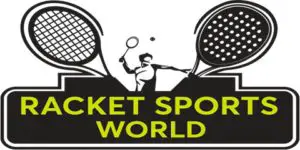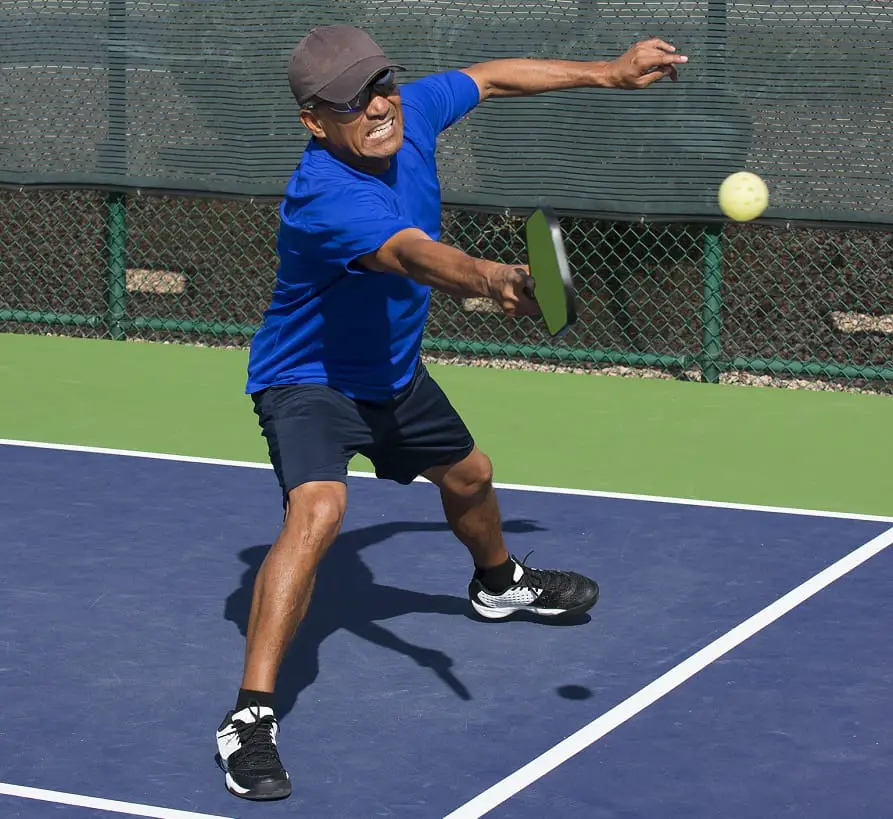Pickleball is a growing sport and everyday, newer players are getting added to the bunch who already love and enjoy this great recreational but competitive sport. And if you are just starting out or have already begun but want to understand the nuances a tad more than you already do, here’s our exhaustive guide for the best pickleball strategies as a beginner.
Before we dive into the actual strategies to make you one of the best in pickleball, we would recommend you go through these more than 80 pickleball terms which would give you a fair idea about some of it when we use it below.
And there is no doubting you need to pick up the basic pickleball rules before you start talking strategy. Our pickleball rule guide for dummies can be found here.
Done? Let’s dive right into this then!
Table of Content
Never Forget Pre-Match Warm-Up
This one isn’t restricted to just pickleball but any sport played at any level. More so if you are a beginner though. And while some might call it a no-brainer, there is a general tendency to take this point for granted.
You want to go into your pickleball training or matches with your muscles warmed up, lest you end up tweaking them during training. And it’s not just the risk of an injury but if you are also looking at pickleball to help you keep fit, the lack of pre-game warm-ups wouldn’t help achieve your full goal.
This is a basic point which not just the beginners but on some occasions, even intermediate and professional players take for granted. Don’t. Add your stretching and warm-up to your daily regime.
Also Read:
Accuracy over Power for Serve
Quite often we get players who have made the switch from tennis to pickleball. Tennis encourages players to try and hit aces while serving and the risk-reward ratio is quite low.
It’s not the same with pickleball.
As a beginner, try and get your serve over the net and inside the service box as often as you can. Consistency and accuracy are the key here as against power.
Also, every other aspect of the game is dependent, to varying extents, on your opponent but for your serve. Reducing errors while serving helps you optimize that advantage.
While precision in placement also helps, especially if you have begun reading your opponent’s weakness (see section below), the starting point of your pickleball play should always be to not make unforced errors on your serve.
One other reason for this is unlike tennis, pickleball doesn’t allow a second serve. You lose the point if you serve a fault.
Jump to Close to the Kitchen Line ASAP
The farther you are from the net, the more difficult it becomes to control rallies. Which is why, if you are serving, try to head straight close to the net after having sent your serve in.
Since it takes time for the serve to reach your opponent and for the opponent to make a return, it gives you enough time to rush in as close as you can.
However, be careful while you do this against opponents who have an ability to make deep returns. In such cases you might have to pause in the middle of the court to make a return or might have to take it on the half-volley at your feet making it tougher for you.
Keep Away from the Non Volley Zone
While the above advice was for you to rush close to the net, ensure you don’t jump into the kitchen or the no-volley zone. Now it’s not against the rules to be in that zone by itself, but it does mean you cannot play a volley when inside that area and that would make it easier for your opponent to gain control of the rally.
Keep some distance away from the kitchen line which in turn would allow you a better shot at playing the third shot drop. (if you want to understand more about the pickleball kitchen rules, you can read our guide here)
Conversely Keep the Opponents at the Baseline
Continuing on from the previous point on the need to rush to the net, the corollary to that is to try and not allow your opponent to get too close to the net either. Practice hitting long shots which keep the opponents as close as possible to the baseline.
If you can, try hitting the middle of the court while returning a shot, which will make it that much more difficult for your opponents (in doubles) to decide who should go for the return.
Also Read:
Return Long & Hard
If you are returning serves, look to do what you would be most uncomfortable facing yourself and that’s typically long returns back to the baseline. This makes it tougher for the server to rush to the net and play a volley easily.
Avoid the Opponent’s Forehand
It’s good to play consistent pickleball at the start of your career but it’s also a decent option to try and tweak your game ever so slightly for big gains.
Hitting a return? Aim for the backhand of your opponent.
The change isn’t a big one from your end, just bit of a mental adjustment but the result could be something brilliant in your favour.
Why is that, you might ask.
That’s because typically players start out with a way stronger forehand and the backhand is only developed with time (and probably with opponents hitting it more and more often!)
So till such time, it makes perfect sense to make things uncomfortable for your opponent and in turn earn some easy points on the way.
Focus on Smart Rallies Than Hitting Winners
We all love hitting winners, whichever racket sport we love. Try not starting out your pickleball career, however, aiming to do that. Pickleball isn’t sport of power but of finesse and as mentioned elsewhere on this blog as well, placement trumps strength almost every time.
Which is why, when in a rally, don’t try to go for something extraordinary or powerful in a bid to hasten its end. More often than not, as a beginner, it would only lead to unforced errors or allow your opponents to hit an easy winner.
Stay relaxed, keep the ball in play and in doing so, reduce your early errors.
(over time, with more consistency, those smashing winners will also come!)
Practice Hard on Your Drop Shots
As a beginner, there’s always a tendency to copy the pros and one of the most exciting shots in pickleball is the drop shot. It looks classy to watch and the temptation to play during a game is understandable.
However, before you actually start playing this shot in match situations it is imperative to get a solid hang of it during your training. A drop shot isn’t the easiest shot to play for a beginner pickleball player since it needs the player to be in control of the net but be away from the kitchen.
The chance of losing the point because a drop shot turns out to be an easy giveaway is high if mastery isn’t attained over this shot. As a result, if you are only just starting out pickleball, go over and over the drop shot before unleashing it in a game.
Use the Drop Shots in Matches
Well, why do I include this point after having already made a mention of the need to practice drop-shots before actually playing them? It’s only natural players will use a shot in the match which they have practiced hard during their training, right?
Typically this works for most shots but the drop-shot isn’t the easiest shot to play for those who have been around pickleball for a while as well. Beginners would find it even tougher and the lack of confidence or the fear of losing the point pushes them into not attempting the shot too often. At times, they go the entire game without playing one.
The best way to inculcate a strategy is to replicate your practice into your matches as soon as you can.
Sure, you might make mistakes and there could also be games you lose because you lack the sharpness needed to play a particular shot – the drop shot in this case – under pressure. However, that will give you an idea about what you need to change as well and a need to practice that skill harder.
That’s the thing with muscle memory; the more you practice, play and sharpen, the better you get. No different for the drop shots either.
Analyze Opponent Weakness (before and during match)
This is strategic and slightly bordering on advice which I wouldn’t otherwise give a beginner but it’s something to be mindful as you are getting the hang of the aforementioned points.
Invariably when you start off, you would be playing against players of very similar pedigree. If you can make a mental note of the strength and weaknesses of your opponents, especially the regular ones, it would go a long way in helping you win points and matches.
This is more than just about winning points though.
It would also get you in that frame of mind where it’s not just about your technique you are thinking of but also tactics. And it’s a good habit which would hold you in a good stead for at later levels of play.


